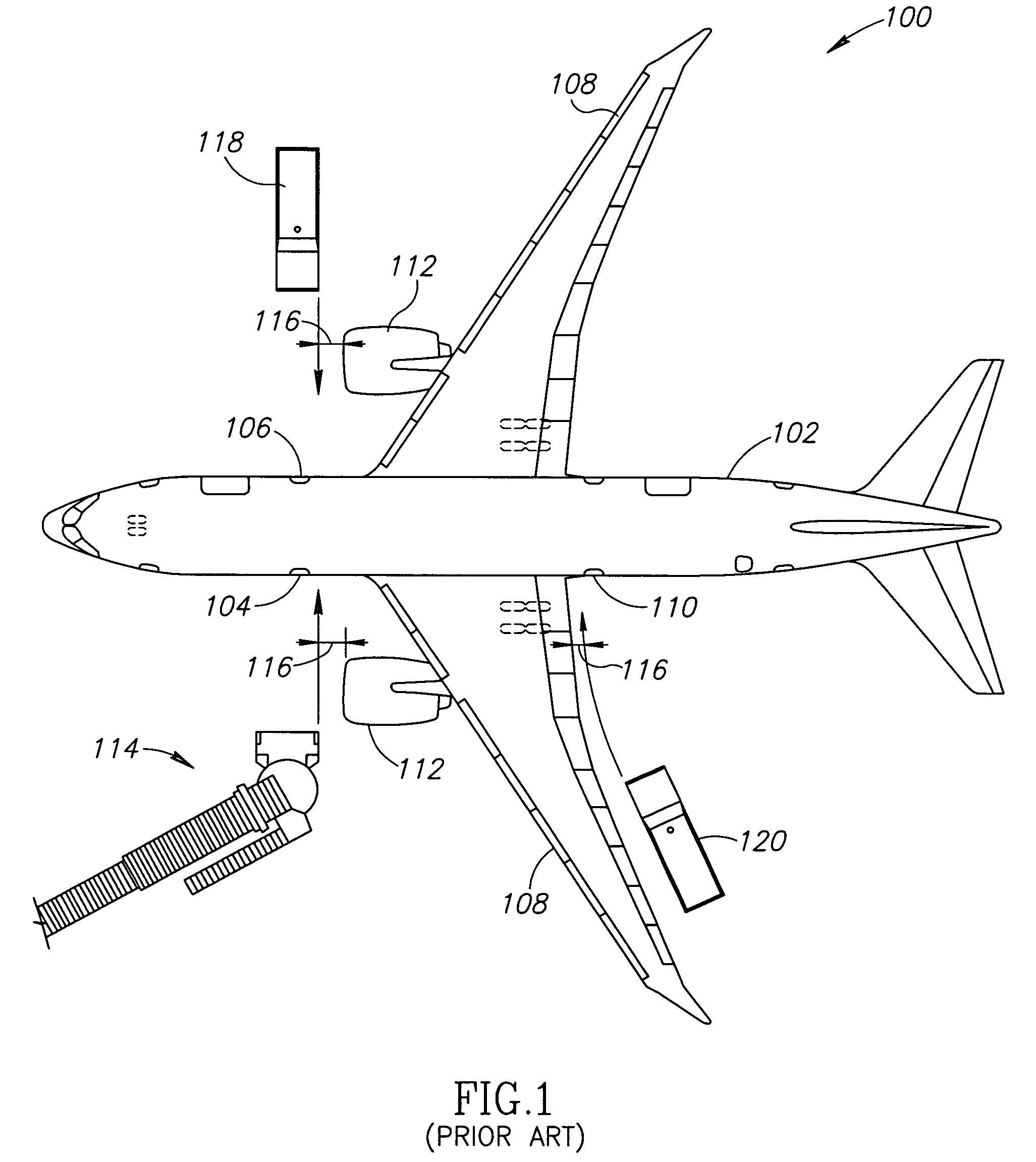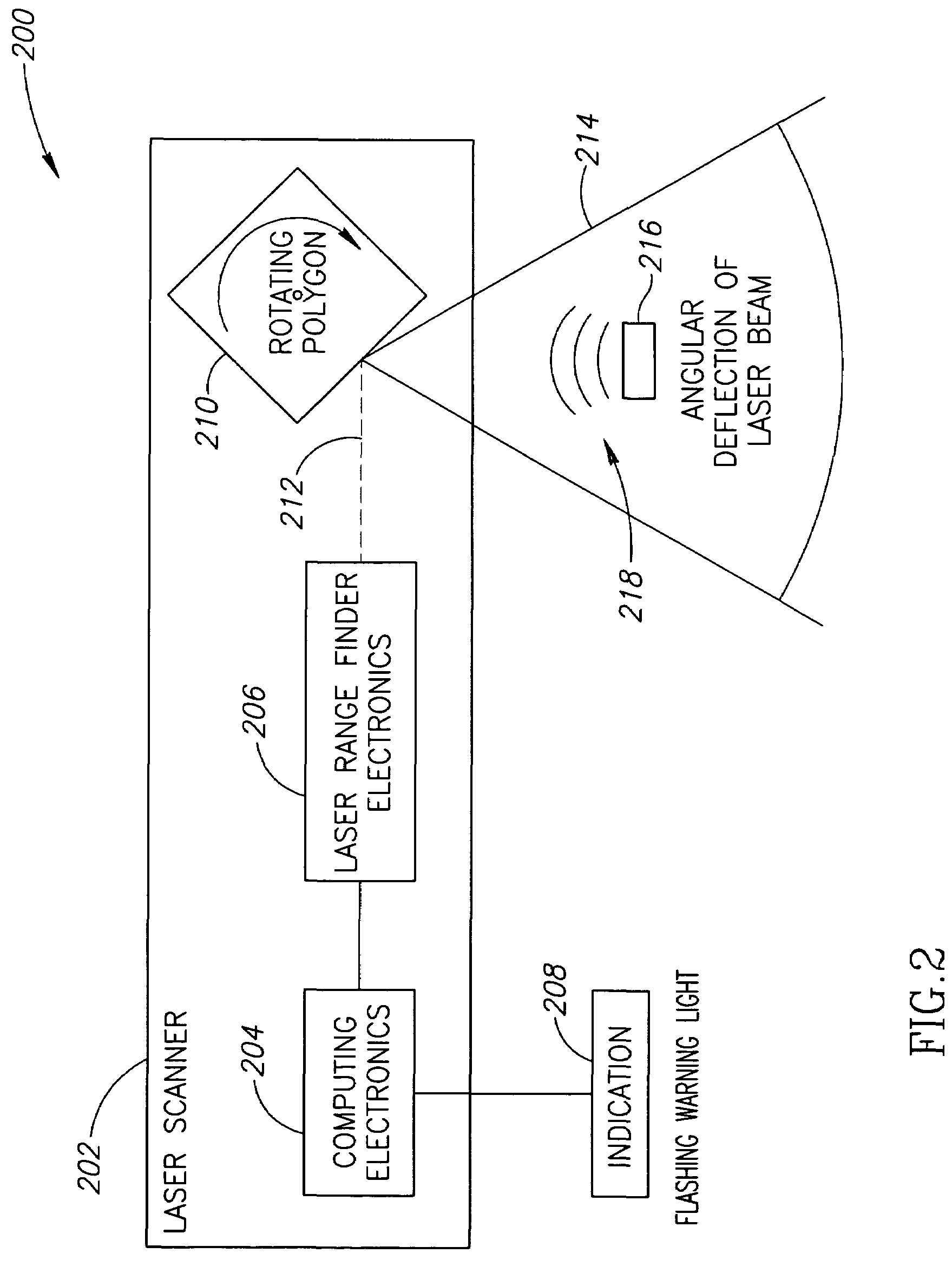Systems and methods for collision avoidance
a collision avoidance and system technology, applied in the field of collision avoidance systems, can solve the problems of significant damage to the aircraft, service vehicle may inadvertently collide with a portion of the aircraft, and the risk of collision, so as to reduce the possibility of collision and reduce the cos
- Summary
- Abstract
- Description
- Claims
- Application Information
AI Technical Summary
Benefits of technology
Problems solved by technology
Method used
Image
Examples
Embodiment Construction
[0012]The present invention relates to systems and methods for collision avoidance between aircraft and ground-based service equipment. Many specific details of certain embodiments of the invention are set forth in the following description and in FIGS. 2-3 to provide a thorough understanding of such embodiments. One skilled in the art, however, will understand that the present invention may have additional embodiments, or that the present invention may be practiced without several of the details described in the following description.
[0013]Generally, embodiments of systems and methods in accordance with the present invention may accurately measure the clearance between a moving service vehicle or other ground-based equipment and an aircraft stationed on the ground, and may assist an operator of the ground-based equipment with maintaining a minimum clearance and avoiding a collision with the aircraft. In one particular embodiment, when the critical clearance (e.g. 3 feet) is reached...
PUM
 Login to View More
Login to View More Abstract
Description
Claims
Application Information
 Login to View More
Login to View More - R&D
- Intellectual Property
- Life Sciences
- Materials
- Tech Scout
- Unparalleled Data Quality
- Higher Quality Content
- 60% Fewer Hallucinations
Browse by: Latest US Patents, China's latest patents, Technical Efficacy Thesaurus, Application Domain, Technology Topic, Popular Technical Reports.
© 2025 PatSnap. All rights reserved.Legal|Privacy policy|Modern Slavery Act Transparency Statement|Sitemap|About US| Contact US: help@patsnap.com



